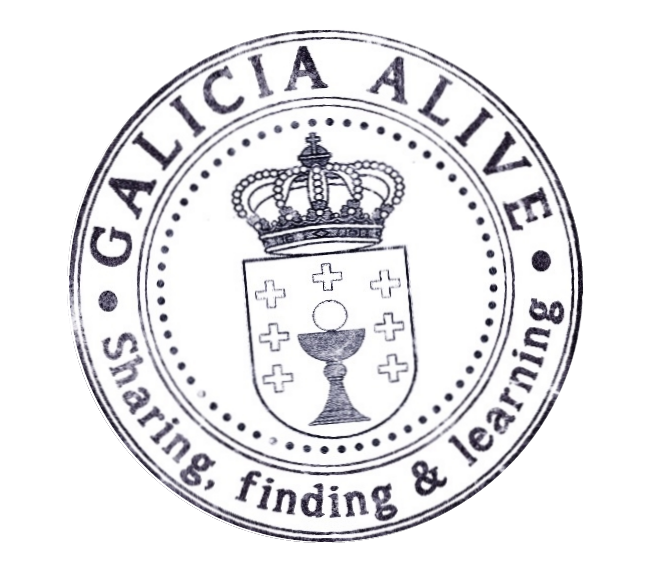It was the year 1846(7), during the reign of Isabel II and under the yoke, tyranny and absolutism of General Ramón María Narváez. Galicia was going through extremely critical and alarming moments in all aspects. A new constitution had been born the previous year, reducing rights to the citizen. An electoral law limited the right to vote to people who could pay a certain amount.
Throughout Galicia protests and exclamations of reproach were heard about the regime that devastated Galicia with its centralist administration, whose high taxes constituted the ruin of the region. Contributions and taxes amounted to fabulous sums.
In 1846, the marriage of Queen Elizabeth II, barely 16 years old in November of the previous year, became a state issue with wide international repercussions. Various candidates presented themselves. On the part of Moderate Government of Narváez, the candidate was Francisco de Asís de Borbón y Borbón. His brother Enrique de Borbón y Borbón was the Progressive Party candidate and in particular for the Galician Progressivism, since he began his military career in Ferrol in 1840. In 1843 he was already a Ship Lieutenant and in 1845 a Frigate Captain.
During the years of his military career in Ferrol, Enrique de Borbón frequented the house of Juana María de la Vega, who was forced to stop being tutor to Queen Elizabeth II when General Narváez entered Madrid on July 26, 1843 and the Espartero Regency ended. The A Coruña house of Juana de la Vega on Calle Real became the center of progressive conspiracies. The Cadiz general Miguel Solís Cuetos was also a participant in the meetings at Juana de la Vega’s house.
The progressive candidate for marriage to the young Queen Elizabeth II had published a progressive manifesto on December 31, 1845. This publication was an excuse to banish him to a point in France until further notice, through the Royal Order of March 20, 1846. This was communicated to the Captain General of Galicia, with orders for its enforcement and providing him with the necessary means, so that Enrique de Borbón left the country at the end of 48 hours.
CONTEXT & BACKGROUND
-
- REGENCY OF MARÍA CRISTINA
- Carlist War I [Guerra Carlista I]
- Political Instability: Multiple Governments
- Constitution of 1837
- Revolutions during the Regency of María Cristina
- REGENCY OF GENERAL ESPARTERO
- Revolutions during the Regency of Espartero
- REIGN OF ELIZABETH II
- Moderate Decade
- Revolutionary Boards in Galicia
- Revolutions during the Reign of Elizabeth II
- Constitution of 1845
- REGENCY OF MARÍA CRISTINA
GALICIAN LIBERAL REVOLUTION OF 1846
GALICIAN LIBERAL REVOLUTION OF 1846 (Full article)
GALICIAN LIBERAL REVOLUTION OF 1846: Uprising
The Regiment of Zamora was garrisoned in A Coruña since 1844 (4), whose commanders were supporters of General Espartero. Due to the fear of a possible military uprising, the Government of Narváez made the decision to gradually move the regiment to Valladolid.
The second of these battalions arrived in Lugo on April 2, 1846(4). He took the initiative to rise up against the Government of Narváez. Being commanded by Commander Miguel Solís Cuetos, at first it was thought this uprising was under the orders of Espartero himself, but doubts soon dissipated.
HELP US KEEP WRITING
To increase the quality of our posts, we need more time. You can help us by buying through these Amazon links. We leave the following that may be useful and interesting:
REFERENCES
- HISTORIA DO MUNDO CONTEMPORÁNEO. 1 Bachillerato. Coord Eugenio García Almiñana. ECIR Editorial.
- HISTORIA 4º: Ciencias Sociales. M. Burgos, J. Calvo, M. Jaramillo, S. Martín. Editorial Anaya.
- Sermos Galiza: Vía Galega difunde un vídeo da Revolución Galega de 1846
- El Ideal Gallego: Los mártires de Carral que se alzaron en La Coruña
- La Voz de Galicia: Un revolucionario de 1846 en Corcubión y Cee: Hermógenes Villanueva
- Galicia Latina: La revuelta de 1846
- Eco Republicano: Los Mártires de Carral, 26 de abril de 1846
- ABC: El mito nacionalista de Carral
- Terra e Tempo: Historia e mito
- Cultura galega: Ramón Rúa Figueroa. Enxeñeiro de minas e membro da xeración provincialista de 1846
- Fundacion Domingo Fontán: LA REVOLUCIÓN GALLEGA DE 1846
- Galicia pueblo a pueblo: RUTA DE LOS MÁRTIRES DE CARRAL
- Boletín Oficial de la Provincia de Lugo – Núm. 4 – 9 xaneiro 1856
- La Oliva – Periódico de política, literatura e intereses materiales – Ano I Número 25 – 26 abril 1856
- La Oliva – Periódico de política, literatura e intereses materiales – Ano I Número 28 – 7 maio 1856
- La Revolución – Periódico oficial de la Junta Superior de Galicia – Número 2 – 1846 abril 19
- Congreso: Sesións Historicas do Congreso dos Deputados
- Congreso: 1837 – Mayoria Isabel II
- Congreso: Const1812
- Congreso: Const1837
- BOE Histórico: Gaceta de Madrid Nº 3199 del LUNES 3 DE JULIO DE 1843.
- BOE Histórico: 1843/3200/A00003-00003.pdf
- BOE Histórico: 1843/3205/A00003-00003
- https://www.boe.es/gazeta/dias/1838/11/30/pdfs/GMD-1838-1475.pdf
- http://pares.mcu.es/ParesBusquedas20/catalogo/autoridad/47200
- Congreso: Constitución de 1845
- Wikisource: La Revolución. Periódico oficial de la Junta Superior de Galicia. núm. 1
- Reseña Histórica de los últimos acontecimientos políticos de Galicia, por Don Juan Do-Porto (1846): http://biblioteca.galiciana.gal/es/consulta/registro.do?id=4419
- Nosdiario: 175 anos da batalla cacheiras
- Diccionario Geográfico Estadístico Histórico de España y sus posesiones de ultramar, página 56, Tomo XVI, Madrid 1850, Pascual Madoz
- “Revolución Galega de 1846 “, Francisco Tettamancy Gastón (La Coruña 1854 – 1921)
- La Revolución Gallega de 1846 –Francisco Tettamancy Gastón
- NosDiario: Para que nos teman e nos respecten. A revolución galega de abril de 1846

